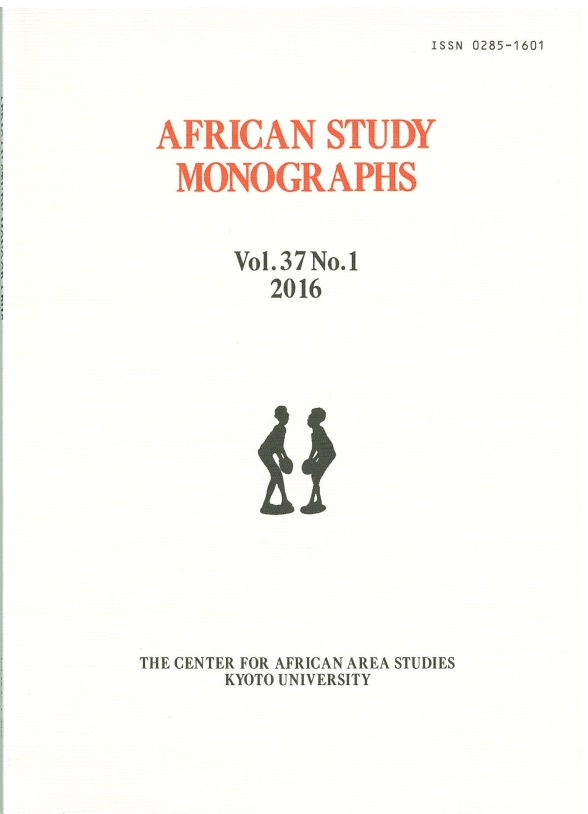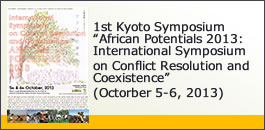Date: Sat., Jan. 29, 2012 15:00-18:30
Venue: Inamori Memorial Foundation, Kyoto University
Program
15:00~16:00
Misa Hirano (Tenri University)
“The Development Process and Conflicts among Bamileke Chiefdoms in Cameroun”
16:10~17:10
Rumi Umino (Meiji Gakuin University)
“Create History, Connect with Others”: The Techniques to Avoid Conflicts among the Griqua in South Africa”
17:20~18:30
Discussion
Report
Misa Hirano (Tenri University)
“The Development Process and Conflicts among Bamileke Chiefdoms in Cameroun”
Bamileke is a group of people living in the west area of Cameroun and has formed more than 100 chiefdoms. These chiefs were frequently fighting each other before the colonization. In this presentation, by using the oral tradition, it was analyzed how the chiefdoms had been formed. It is possible that some small chiefdoms were already formed in the 16th century. It is conceivable that small groups who moved in during the 17th to 18th century formed new chiefdoms by conquering the local people, and the centralization was furthered through the accumulation of wealth by slave trade, etc. The current system was completed when the German settled in at the end of 19th century.
Inside each chiefdom of Bamileke, frictions and internal disputes between the chiefs and the local residents, the resolution and the coexistence were repeated. And among the chiefdoms, the wars broke out because they insulted each other, which resulted in the territorial expansion of the dominant societies and the formation of identity of each chiefdom. However, there also existed systems to resolve or avoid such conflicts through trading, exchanging captivities and forming marital relations.
Rumi Umino (Meiji Gakuin University)
“Create History, Connect with Others”: The Techniques to Avoid Conflicts among the Griqua in South Africa”
The purpose of this presentation is, by studying the people of Griqua living in Republic of South Africa, to indicate that the practice of what they called “history” itself and the rules manifested through the practice (or something what should be called the premise of conducts) consequently lead to the avoidance of conflict with the others. Griqua people are mainly the descendants of Khoikhoi, with those of the San, European immigrants, Bantu and the released or escaped slaves, who formed themselves by calling themselves “Bastards” by the late 18th century, which includes many communities consisting of the chief and the supporters.
From the middle of 1990’s, they started to be connected to the indigenous people’s working group of United Nations and defined themselves as indigenous. Also, they found out that the other Khoisan from Southern Africa participated in this working group and deepened the exchange and partnership with them. Analyzing that process indicates that there existed three what could be called behavioral principals (= rules), which were deeply related among each other; “accept others”, “rearrange flexibly” and “maintain autonomy”. It seems that those rules and conducts consequently helped them avoiding conflict with others and led to maintain coexisting relationships. (Itaru Ohta)


 Exploring African Potentials, Mila Special Issue
Exploring African Potentials, Mila Special Issue
